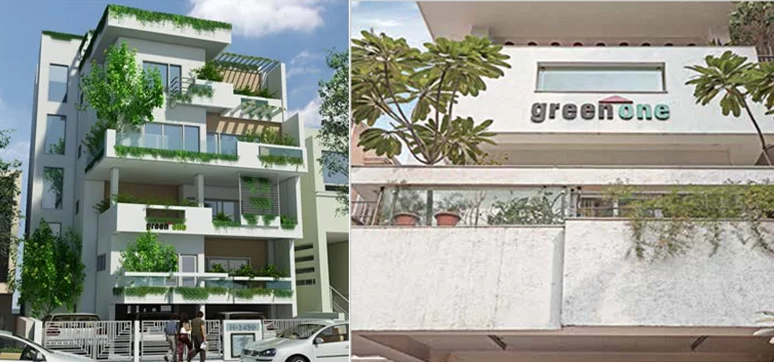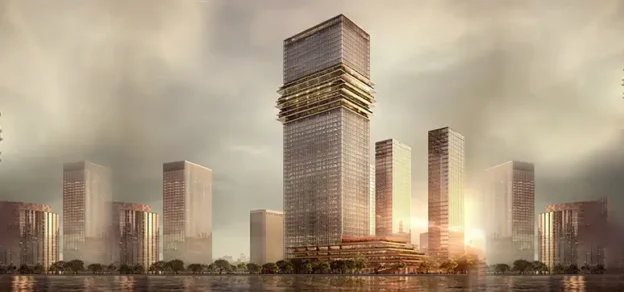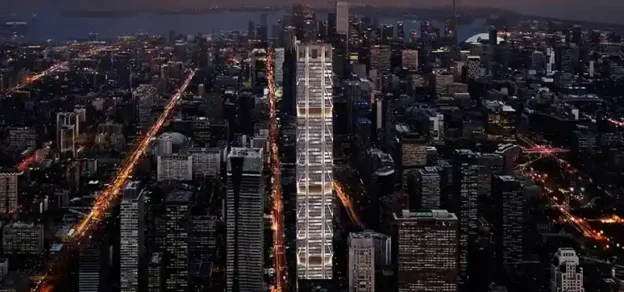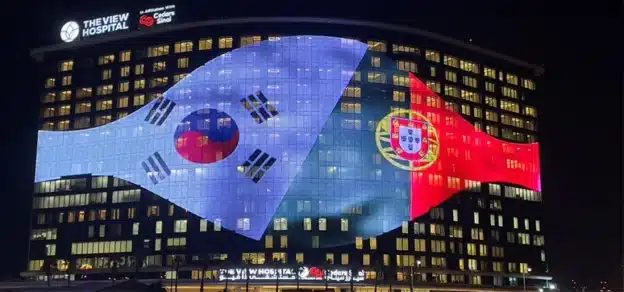Minimalistic and simplistic façade design incorporated with façade systems which are current and energy efficient are paramount factors when dealing with residences. The integrated design approach of combining both aesthetics and functionality helps in developing the architectural form and give rise to an “intelligent skin”.
Design firms create SVAGRIHA rating awareness by practically executing Green construction practices in façade designs. Effective façade systems and techniques have been used in the independent residential project called ‘Green One’ to achieve a 5 star TERI GRIHA rating, first of its kind in India.
The most basic and essential façade design aspects that affect the interior living quality that have been taken care of are:
- Natural ventilation
- Natural lighting
- Solar control
Strategic massing is vital and is done to provide shade and maximise diffused lighting in the interior by staggering and stacking of the built form. The hard scaping is then reduced by adding planters in balconies, which reduce the Urban Heat Island Effect (UHIE) levels and create a holistic space for the residents, reaffirming the firm’s belief in open and green designs in a physical form. This addition in the façade helps in maintaining the interior air quality for its residents.
Most of the energy which is consumed in India is to keep the building cool. This is avoided by creating an envelope for the building which is insulated so that it gains less heat. Glass with low Solar Heat Gain Coefficient (SHGC) is used in the project. Also, double glazing has been provided to decrease heat gain in summers and also heat loss in winters. Le Corbusier, in his time coined the term ‘Murs neutralisants’ or ‘Neutralising walls’ while he was designing Centrosoyuz building.
With the environment sensitive building materials available these days, his concept can be easily achieved in reality, to realise a house which balances the climate needs.
Along with the heat-resistant glass, other green building materials have been used to envelop the building. AAC (Autoclaved Aerated Concrete) bricks have been laid on the exterior wall. The thermal efficiency of AAC makes it suitable for use in areas with extreme temperatures. It eliminates the need for separate materials for insulation, leading to faster construction and cost savings.
A wireframe canopy in the form of steel pergolas is also a façade system used in the project. This purely aesthetic element gives a sense of space to the balcony and also helps in complementing the built volumes.
Another interesting façade system of wood plastic composite (WPC) jali is used in a project in New Delhi. This perforated façade system creates a striking finish in the double-height space. WPC Jali is a current and customisable building material available to architects. It allows you to have varied shapes and sizes with as much translucence as required.
Wood composite panels and aluminium composite panels are used increasingly in facades today. They balance the verticality and/or horizontality of a façade by highlighting and creating a contrast to give the façade a subtle depth. These also help in breaking the monotony of the plaster in the façade by creating a texture difference. As this is a prefabricated standard facade fastening system, it saves time and money. In the project, the wood composite panel has been used to highlight the family room, an additive form in the massing, and create a textural difference and give warmth to the dark grey stone.
Apart from the façade systems and design approaches used in the above mentioned projects, there are a few more latest design trends used in residential facades today.
GFRC (Glass fibre reinforced concrete) jali has been seen often these days as a partial skin or for complete facades. The sense of covered space in balconies and the play of shadows according to the changing sun makes it a self-reinventing space for the residents.
Another interesting skin design observed in residences is the cut-outs of varied shapes in a smooth reinforced concrete wall. This makes the facades a little more opaque but gives it a selective play of sun in the interiors. It is a very sophisticated and clean design approach to block the sun in areas where it is unbearable.
Movable louvers are being used in balconies these days. This is an option that is a spatially temporary facade system and can be adjusted according to the sun’s glare or the inhabitant’s comfort. These steel movable louvers are fixed on rails onto the floor slab itself or the parapet.
Green One – The 5-star TERI GRIHA Rated Home
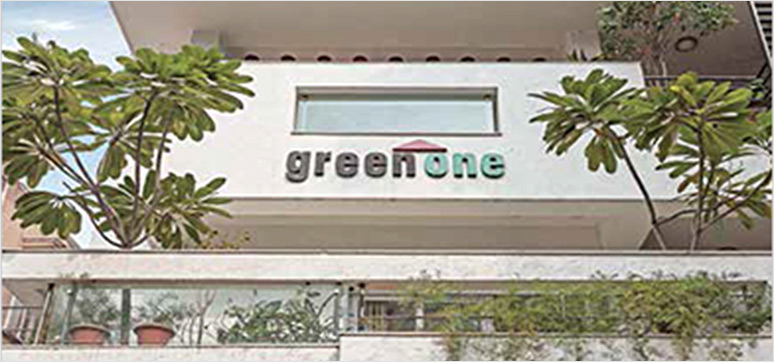
It is the first individual residence in India to register for a TERI GRIHA rating and is also the first project for TERI SVAGRIHA. This residence is located in Chittranjan Park, Delhi. It has achieved a provisional 5-star SVAGRIHA rating.
Overall Design of the building is made with fenestrations, such that they reduce heat gain. The staggering and stacking form provides shade and also maximizes diffused lighting. 54.72 per cent of the total living area falls under the day lit zone as calculated by ECBC method. Glass with low SHGC (Solar Heat Gain Co-efficient) is used. Artificial lights with low LPD (Low Power Density) are installed.
The Envelope is made of green materials such as fly ash bricks for interior walls and ACC bricks for the exterior. Old door frames and bricks are used in non-critical areas. Vermiculture insulation is used on the roof and in some places earthen pots inside the slab solve the purpose. The green roof adds to the process of insulation, while internal and external water bodies help maintain the micro-climate. SVAGRIHA rated that 74.5 per cent of the paved area is either soft paved or shaded with trees. The thermal efficiency of the building was calculated to be 443.32sq.ft. / TR, which is higher than the second SVAGRIHA threshold for Delhi (which is 325sq. ft. / TR). By receiving a total score of 48/50, the house achieved a 5-star rating.
QUICK FACTS :
Project: Green One
Location: CR Park, New Delhi
Client: Mr & Mrs Roy
Architect: Nilanjan Bhowal
Other Consultants: Electrical Consultant – Keshav Sharma | Plumbing Consultant – Deepak Khosla | Landscape Consultant – Akshay Kaul | Structural Consultant – Navin Jateily
Commencement Date: 2012
Completion date: 2014
Area: 1200 sq m
B-31, Pamposh Enclave, Greater Kailash, New Delhi
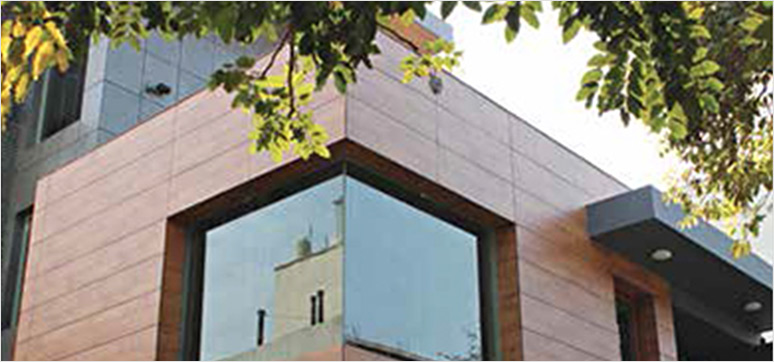
The elegance of the design lies in its minimalism and simplicity. It features clean defined lines and an open layout around a central courtyard space. This allows for abundant sunlight to filter into the whole house. The play of elements between the wooden cladding, glass and dark granite come together to form a stark contemporary facade. Materials used for the surfaces are simple and refined. The exterior has rectilinear lines and forms with a sequence of overlapping discontinuous floors.
The courtyard concept offered the client – air, light, privacy, security and tranquillity as one universally desires in a home. When the lights are turned on, a dramatic effect is created by the jaali screen that runs in the entire height of the courtyard. The movement of light and shade through the house begins to breathe life and warmth into the home welcoming its users in.
QUICK FACTS :
Project: B-31
Location: Pamposh Enclave, Greater Kailash, New Delhi
Client: Mr & Mrs Gupta
Architect: Nilanjan Bhowal
Other Consultants: Electrical Consultant – Keshav Sharma | Plumbing Consultant – Deepak Khosla | Landscape Consultant – Akshay Kaul |Structural Consultant – Navin Jateily
Commencement Date: 2010
Completion date: 2012
Area: 780 sq m
C-221, Defence Colony, New Delhi
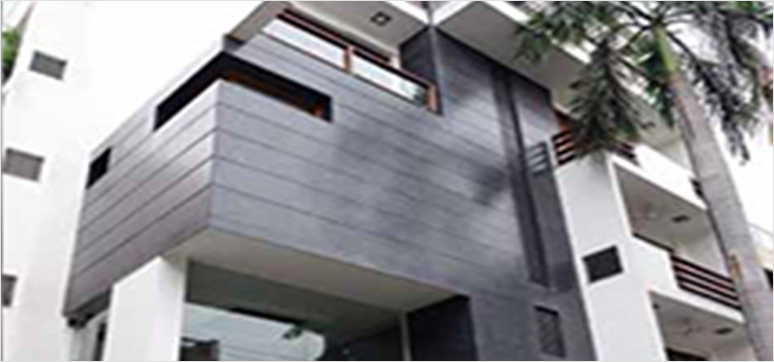
The front facade has a play of white and grey forming an interesting elevation with stone clad massing accentuating the form, and windows as punctures and slits that add to the play of shadows. The lobby was designed as a double height space with glass contrasting against the warmth of wood and dark black stone, which gave character to the space.
QUICK FACTS :
Project: C-221
Location: Defence Colony
Client: Mr. & Mrs. Bhasin
Architect: Nilanjan Bhowal
Other Consultants: Landscape Consultant – Akshay Kaul | Structural Consultant – Navin Jateily
Commencement Date: 2012
Completion date: 2013
Area: 1300 Sq m
